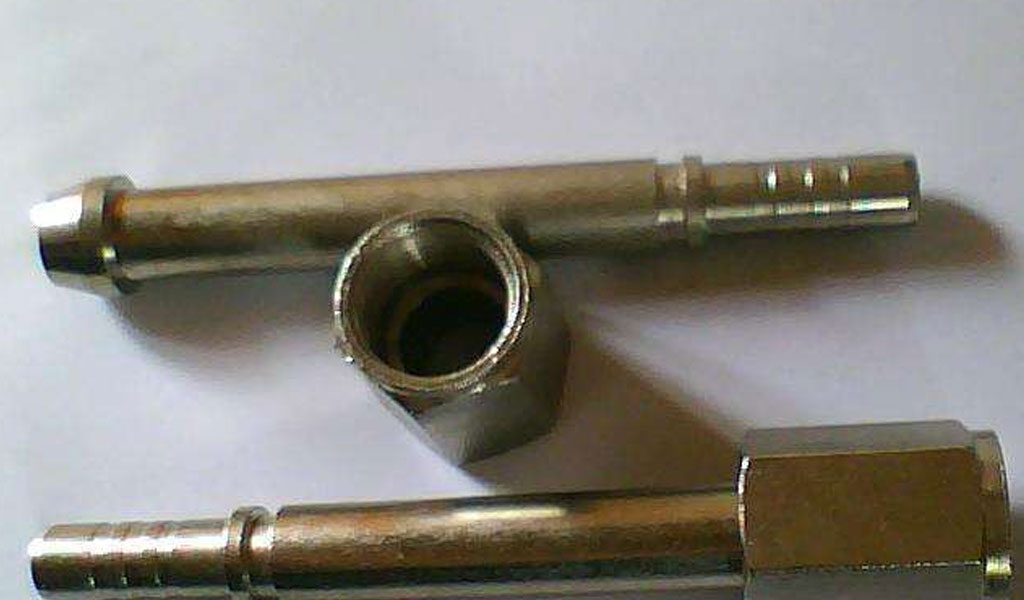How To Processing Brass
Brass is a copper alloy with excellent processing function, and also has the characteristics of strong corrosion resistance, excellent cold and hot processing function and casting function. It is widely used in many industrial industries such as electronic and electrical industry, chemical industry, machinery industry and so on. The welding of brass in the reproduction process is mainly divided into welding of processed copper and repair welding of castings.
Let’s introduce the processing of brass welding – the methods of brass welding are: gas welding, carbon arc welding, manual arc welding and argon arc welding.
Gas welding of brass: Due to the low temperature of the gas welding flame, the evaporation of zinc in the brass during welding is less than that of electric welding, so gas welding is the most commonly used method in brass welding. The welding wires used for brass gas welding are: wire 221, wire 222 and wire 224, etc. These welding wires contain elements such as silicon, tin, iron, etc., which can avoid and reduce the evaporation and burning of zinc in the molten pool, which is beneficial to ensure the welding seam. function and avoid stomata. The commonly used fluxes for gas welding of brass are solid powder and gas additives. The gas is composed of methyl borate and methanol; such as gas agent 301.
Technical arc welding of brass: In addition to copper 227 and copper 237 for welding brass, self-restrained electrodes can also be used. When brass arc welding, the positive connection method of the DC power supply should be used, and the electrode should be connected to the negative electrode. The surface of the weldment should be carefully cleaned before welding. In general, the groove angle should not be less than 60-70. In order to improve the weld formation, the weldment should be preheated at 150-250 °C. During operation, short arc welding should be used, no lateral and front and rear swings are required, linear movement is required, and the welding speed should be high. Brass weldments in contact with corrosive media such as seawater and ammonia must be annealed after welding to eliminate welding stress.
Brass technical argon arc welding: Brass technical argon arc welding can use standard brass welding wires: wire 221, wire 222 and wire 224, and can also use materials with the same composition as the base metal as filler materials. Welding can use DC positive connection or communication. When welding with AC, the evaporation of zinc is lighter than when DC is connected. Generally, there is no need to preheat before welding, and it is only preheated when the difference in plate thickness is relatively large. Welding speed should be as fast as possible. After welding, the weldment should be heated at 300-400℃ for annealing treatment to eliminate welding stress and avoid cracks in the weldment during use.
Brass carbon arc welding: When brass carbon arc welding, wire 221, wire 222, wire 224 and other welding wires are selected according to the composition of the base metal, and the brazing wire can also be used for welding. Welding can choose gas agent 301 as auxiliary agent. Welding should be performed with short arcs to reduce zinc evaporation and burnout. The DC TIG welding process is widely used in the welding of copper and copper alloys.
In recent years, there are more and more constructions using MIG method to weld copper and copper alloys, especially for aluminum bronze, silicon bronze and cupronickel with a thickness of ≥3mm, MIG welding method is the best choice. Copper and copper alloys with a thickness of 3~14mm or >14mm should almost always use MIG welding. Due to high deposition efficiency, large penetration, and fast welding speed (usually 3~4 times that of TIG welding), it can achieve high efficiency, high quality and low cost-effectiveness requirements. The copper material should reach the preheating temperature requirements (400~600℃ for pure copper, 200~300℃ for copper alloy) before welding.

